In the realm of home landscape design, the melding of diverse cultural elements offers a rich palette from which to draw inspiration. This approach not only enhances the aesthetic appeal of outdoor spaces but also fosters a deeper connection between the inhabitants and the global tapestry of traditions and styles. By weaving together design principles from different cultures, homeowners can create landscapes that are not only visually striking but also meaningful, reflecting a harmonious blend of heritage and creativity.
Zen Harmony Meets Mediterranean Vibrance
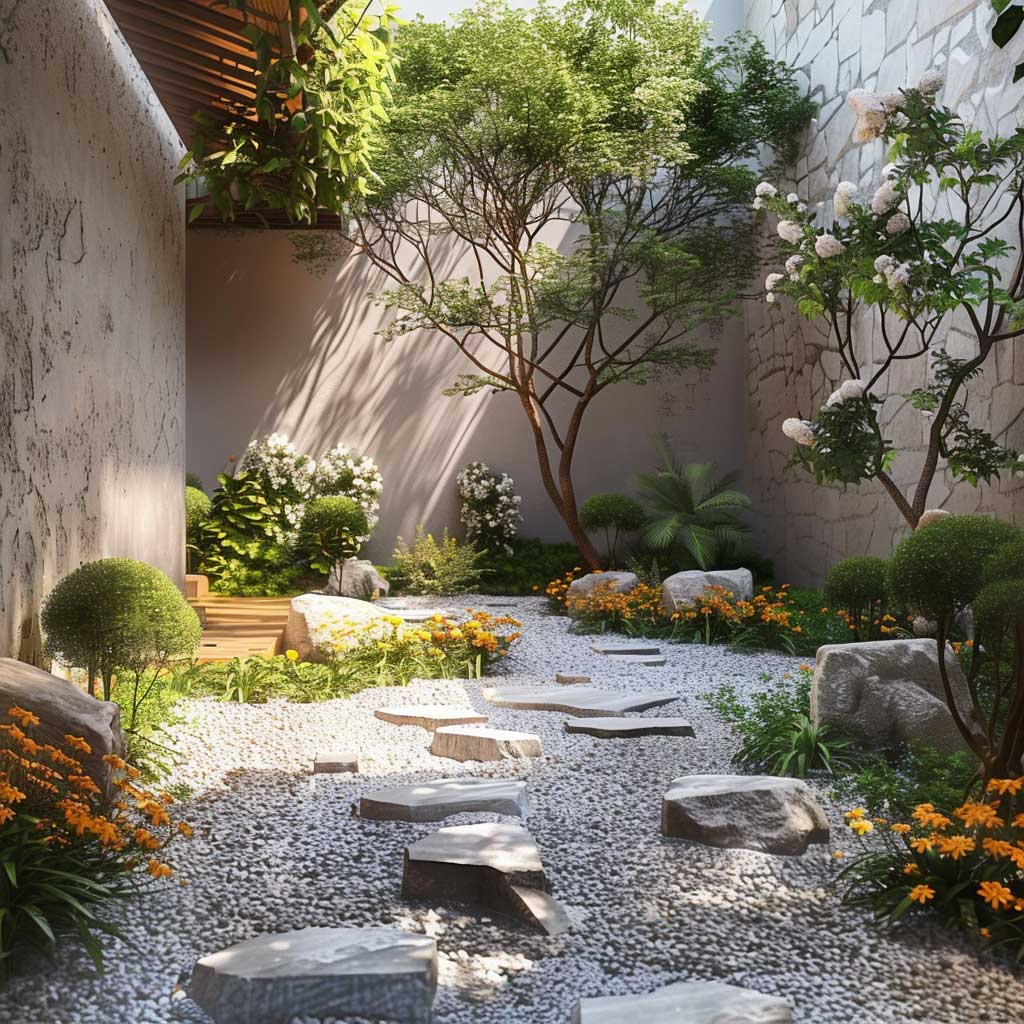
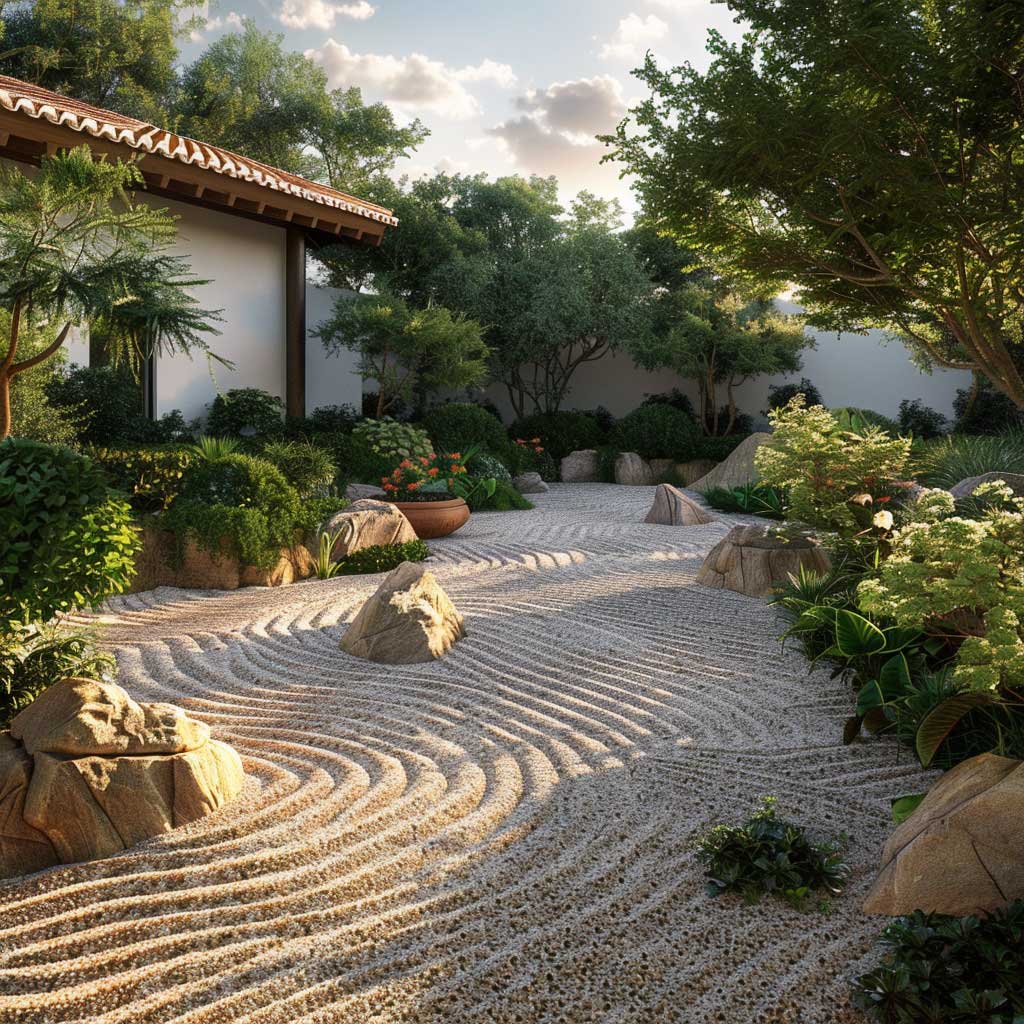
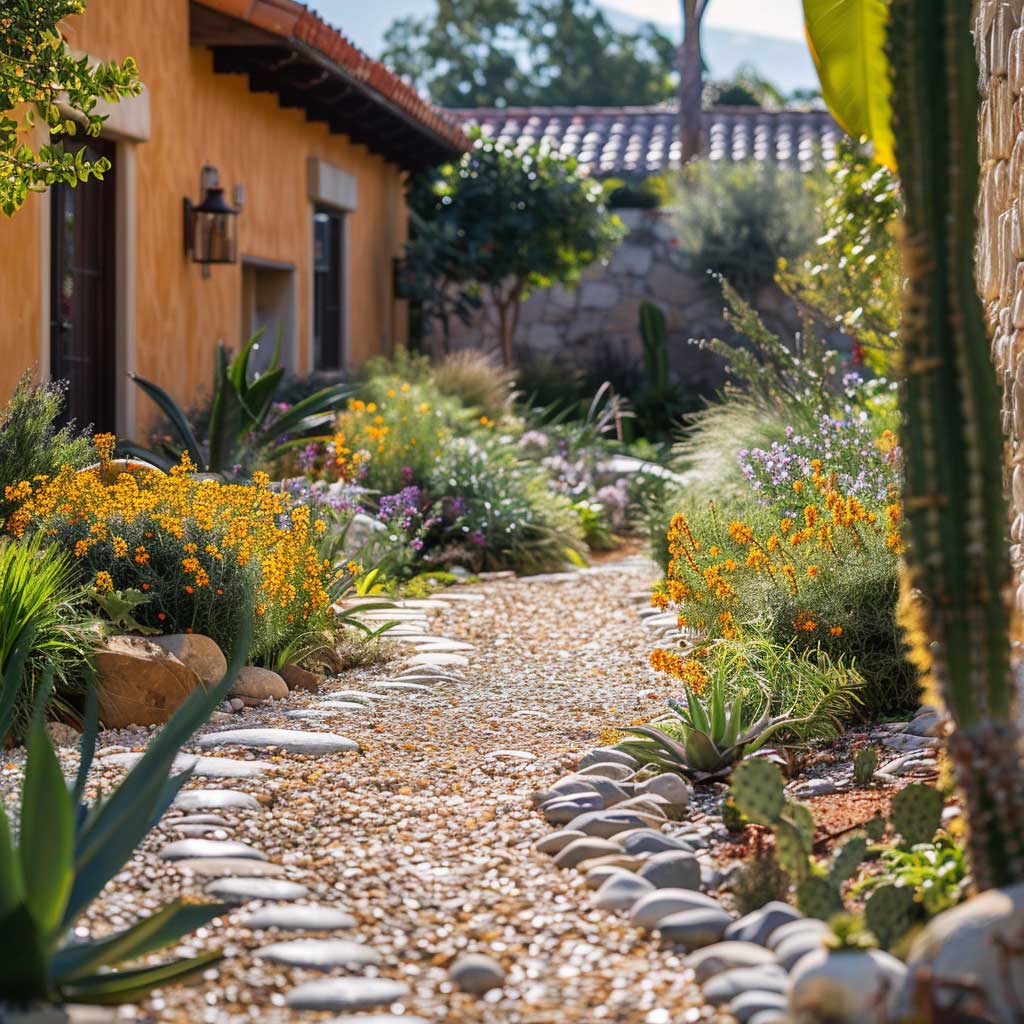

In the evolving narrative of home landscape design, the dialogue between diverse cultural elements can craft spaces of unexpected harmony and beauty. One such dialogue unfolds in a garden where Zen harmony meets Mediterranean vibrance, a testament to the seamless blend of minimalist tranquility with colorful exuberance. This unique fusion creates a landscape that is both a retreat and a celebration, inviting those who enter to experience a world where cultures coalesce.
The foundation of this garden is the principle of Zen, with its emphasis on simplicity, natural beauty, and a sense of calm. The garden features carefully raked gravel paths that lead visitors on a meditative journey, past rocks placed with intention and precision. These elements are symbolic, representing islands amidst the sea, encouraging mindfulness and inner peace as one meanders through the garden.
Contrasting with the Zen garden’s restrained palette, the Mediterranean influence bursts forth in vibrant color and texture. Terracotta pots overflow with a profusion of flowering plants, from the deep blues of lavender to the bright yellows of sunflowers, each adding a splash of warmth and life. Olive trees and grapevines drape gracefully over trellises, providing shade and a sense of enclosure, while their fruits offer a tangible connection to the Mediterranean lifestyle, celebrating the joy of the harvest and the pleasure of outdoor living.
The integration of these two distinct styles within the home landscape design is not merely aesthetic but also deeply philosophical. It represents a balance between contemplation and celebration, between the introspective journey of the Zen garden and the communal joy found in Mediterranean gardens. This balance is achieved through careful planning and design, ensuring that each element complements the other, with neither overpowering the sense of harmony that pervades the space.




Water features play a crucial role in this garden, serving as a bridge between the two cultural influences. A minimalist water basin, reminiscent of those found in Zen gardens, is placed near the entrance, its surface reflecting the sky and the surrounding greenery. Further into the garden, a small fountain, inspired by Mediterranean designs, adds the sound of flowing water, enlivening the space and inviting visitors to linger and enjoy the sensory delights of the garden.
The choice of materials and plants is also deliberate, with an emphasis on sustainability and environmental sensitivity. Local stone and recycled materials are used to create pathways and features, while the selection of plants favors species that are well-adapted to the local climate, reducing the need for water and maintenance. This approach not only enhances the garden’s ecological footprint but also reinforces the connection between the landscape and its cultural inspirations, grounding the design in a sense of place and authenticity.
In this garden, the blend of Zen harmony and Mediterranean vibrance offers more than just a visual feast. It provides a space for reflection and celebration, for quiet moments alone and joyful gatherings with loved ones. It is a vivid example of how home landscape design can transcend boundaries, bringing together elements from across the globe to create a setting that is both unique and universal.
This fusion of cultures in home landscape design not only enriches the aesthetic and emotional appeal of outdoor spaces but also serves as a reminder of the interconnectedness of our world. It encourages homeowners and designers alike to explore the vast palette of cultural traditions in landscaping, crafting spaces that reflect a harmonious blend of influences and offering a sanctuary where diverse elements coexist in beauty and peace.
Tropical Oasis with a Touch of English Cottage Charm

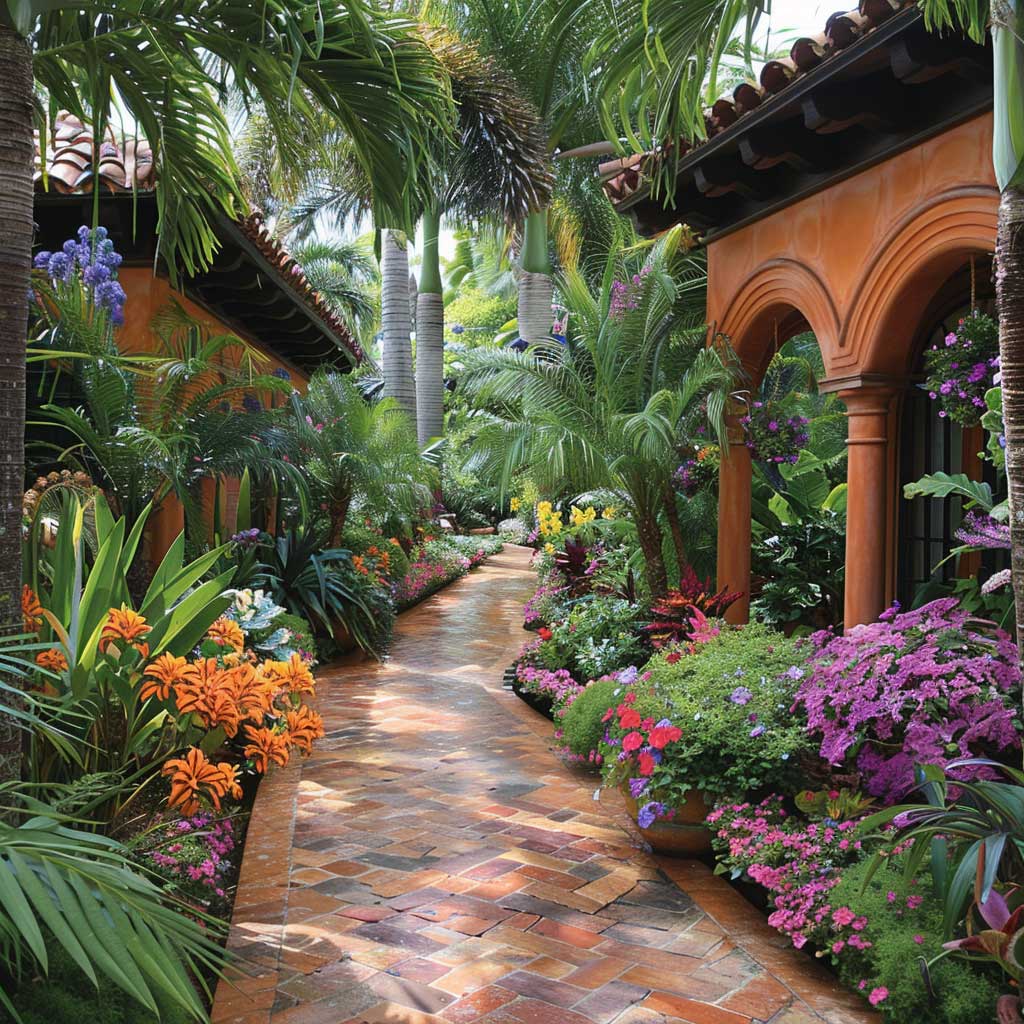


In the realm of home landscape design, the merging of disparate cultural and environmental elements can yield spaces of unparalleled beauty and comfort. The concept of a tropical oasis adorned with the quaint charm of an English cottage garden represents such a blend, offering a lush, vibrant escape that feels both expansive and intimately cozy.
This garden is a celebration of contrast and harmony, where the lushness of tropical flora envelops the space in a verdant embrace, while touches of English garden whimsy sprinkle the landscape with bursts of color and texture. The design is a thoughtful convergence of the tropical’s bold and the cottage’s delicate, crafting a landscape that is rich in layers and depth.
At the heart of the tropical oasis, towering palm trees and broad-leaved tropical plants create a canopy of green, under which the vibrant hues of tropical flowers bloom. This dense foliage not only provides shade and privacy but also sets the stage for a journey through a garden where each step unveils new sights, scents, and sounds. The air is filled with the fragrance of blooming flowers mixed with the earthy scent of moist soil, a reminder of the natural world’s lush abundance.
Winding through this tropical paradise, stone pathways lead to hidden nooks and clearings, each designed with elements of an English cottage garden in mind. Here, traditional cottage garden plants such as lavender, roses, and foxgloves intermingle with their tropical counterparts. These plantings are arranged in a seemingly haphazard fashion, true to the cottage garden ethos, yet each placement is carefully considered to ensure harmony with the tropical landscape.




The inclusion of a small water feature, perhaps a gently bubbling fountain or a quiet pond, adds a serene focal point, reflecting the sky and the surrounding foliage. The sound of water moving through the garden enhances the sense of tranquility and provides a habitat for birds and beneficial insects, adding to the garden’s biodiversity.
Garden structures, such as arbors and trellises, are cloaked in climbing plants and vines, creating natural archways that invite exploration. These elements, borrowed from English garden design, are adapted to suit the tropical climate, constructed from materials that weather the humid conditions gracefully.
This garden is not only a place of beauty but also a reflection of the homeowner’s journey and tastes, blending the warmth and exuberance of the tropics with the charm and comfort of an English cottage garden. It’s a personal retreat that respects and celebrates the diversity of the natural world, offering a peaceful sanctuary from the hustle and bustle of daily life.
In creating this tropical oasis with a touch of English cottage charm, the home landscape design transcends traditional categorizations, instead offering a unique space that is both inviting and inspiring. It demonstrates the power of landscape design to bridge cultures and climates, creating environments that are nurturing, beautiful, and richly layered.
The garden serves as a living example of how diverse elements can come together to create a cohesive and harmonious whole. It challenges and expands our understanding of what is possible in home landscape design, encouraging us to think creatively about the spaces we inhabit and how they can reflect and accommodate our multifaceted lives.
Modern Minimalism Meets Ancient Traditions




In the diverse world of home landscape design, a compelling narrative unfolds when the clean, uncluttered lines of modern minimalism encounter the rich textures and deep history of ancient traditions. This fusion results in a landscape that speaks to both the past and the present, a space where simplicity and complexity coexist in harmony.
This garden is an exploration of balance and contrast, where the minimalist philosophy of using fewer elements to create a serene, uncluttered space aligns with the incorporation of ancient cultural elements that carry the weight of history and tradition. The result is a landscape that feels both timeless and decidedly contemporary, a place where every element has purpose and meaning.
At the core of this design is the use of simple, geometric forms and a restrained palette of materials. Smooth, polished stone paths lead through the garden, their clean lines directing the eye and encouraging a calm, meditative walk. These paths intersect with areas of meticulously maintained grass and minimalist plantings, where each species is chosen for its form, texture, and color, contributing to the overall sense of calm and order.
Amidst this modern framework, ancient elements emerge. Traditional sculptures, perhaps inspired by ancient civilizations such as the Greeks, Romans, or Mayans, are strategically placed throughout the garden. These works of art serve as focal points, inviting contemplation and reflection on the passage of time and the interconnectedness of human cultures. Water features, inspired by ancient aqueducts or reflecting pools, add a dynamic element to the garden, their soothing sounds and reflective surfaces enhancing the tranquil atmosphere.


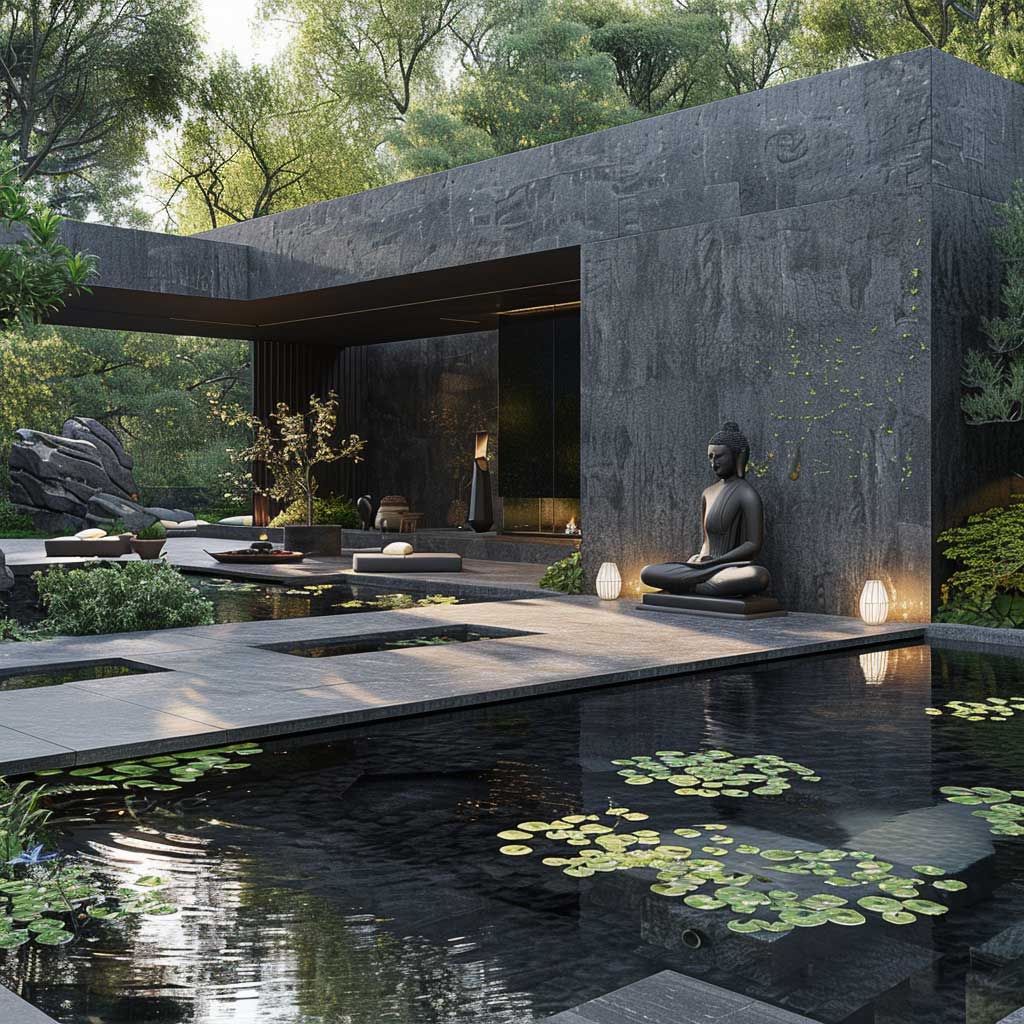

The integration of these ancient elements into the minimalist design does not feel forced or ornamental. Instead, they are woven into the fabric of the landscape, their historical and cultural significance enriching the modern aesthetic. This approach reflects a deep respect for the past, acknowledging the ways in which ancient traditions continue to influence and inform contemporary design.
Sustainability plays a key role in this garden, with an emphasis on native plantings that require minimal water and maintenance, echoing the minimalist ethos while also paying homage to the land’s ancient heritage. This connection to the local environment and history adds depth to the garden, grounding the modern design in a sense of place and continuity.
This landscape is more than just a space for physical relaxation; it is a place of intellectual and spiritual engagement. It invites homeowners and visitors alike to ponder the beauty of simplicity, the complexity of history, and the ways in which we are all connected across time and culture. It is a testament to the power of home landscape design to bridge worlds, blending the clean lines of modern minimalism with the enduring legacy of ancient traditions in a space that is both beautiful and meaningful.
In crafting this garden, the designer demonstrates how home landscape design can be a form of storytelling, where the narrative of human creativity and innovation is told through the dialogue between the modern and the ancient. This space challenges us to consider our place within this continuum and to find harmony in the blending of disparate elements.
Blending cultures through home landscape design is an art form that allows for personal expression while paying homage to the diversity of the world’s traditions. It challenges designers and homeowners alike to think creatively about how different elements can coexist harmoniously, resulting in outdoor spaces that are not only beautiful and functional but also rich in meaning and history. Through thoughtful integration of varied cultural influences, these landscapes become a testament to the beauty of diversity and the potential for unity in design.












